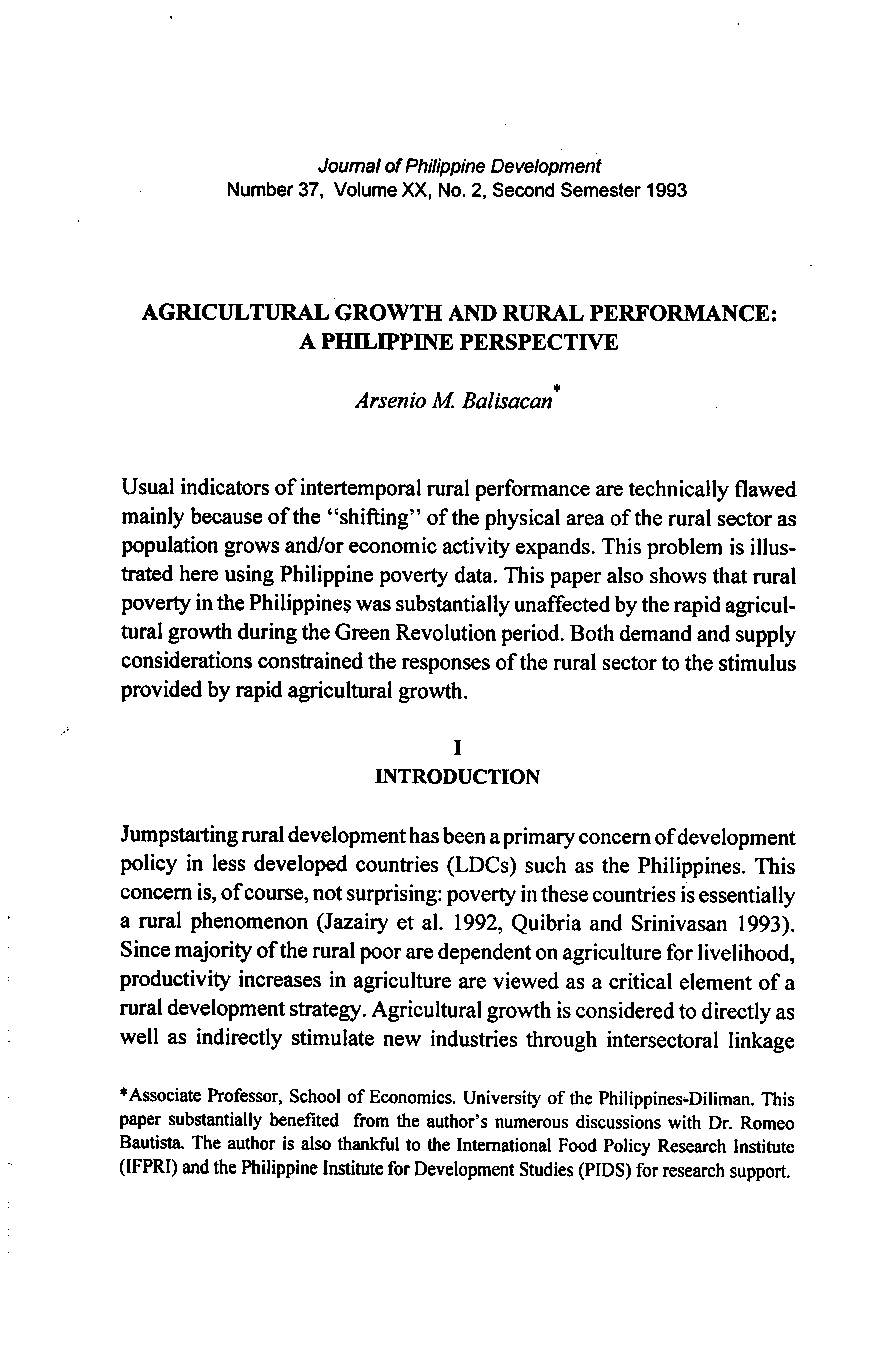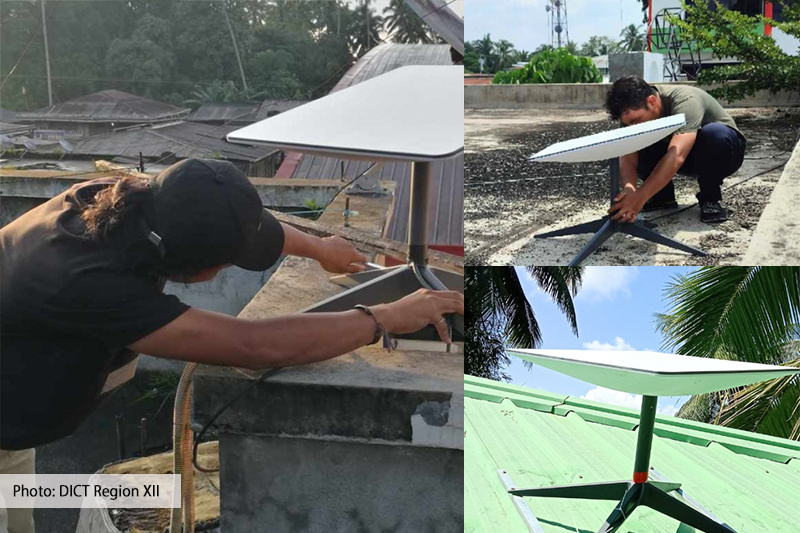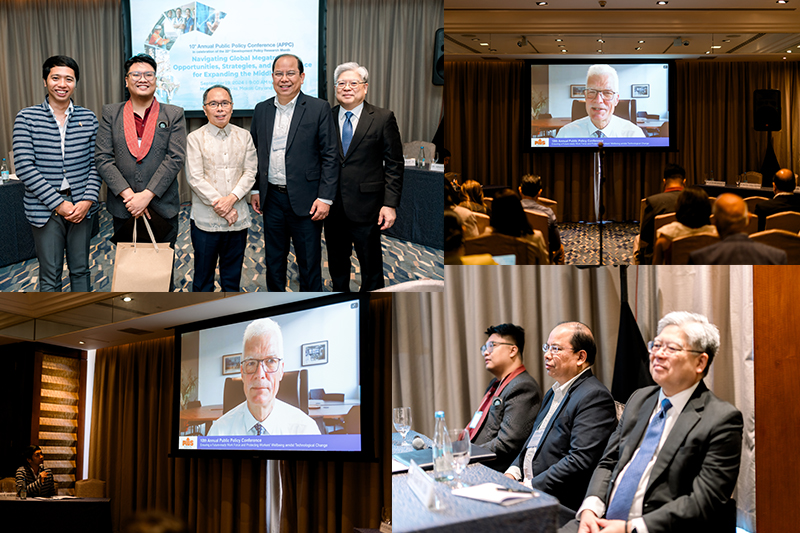Usual indicators of intertemporal rural performance are technically flawed mainly because of the “shifting” of the physical area of the rural sector as population grows and/or economic activity expands. This problem is illustrated here using Philippine recovery data. Also shown is the fact that Green Revolution has not substantially alleviated rural poverty in the Philippines.
Citations
This publication has been cited 4 times
In other Publications
- Briones, Roehlano M.. 2010. Scenarios and options for productivity growth in Philippine agriculture: An application of the Agricultural Multimarket Model for Policy Evaluation (ample). Discussion Papers DP 2010-05. Philippine Institute for Development Studies.
- Briones, Roehlano M.. 2012. Addressing land degradation: Benefits, costs, and policy directions. Philippine Journal of Development PJD, 37, no. 1c . Philippine Institute for Development Studies.
- EABER. 2010. Scenarios and options for productivity growth in Philippine agriculture: An application of the Agricultural Multimarket Model for Policy Evaluation (ample). Microeconomics Working Papers 22806. East Asian Bureau of Economic Research.
- Orbeta, Aniceto Jr. C. and Maria Teresa Sanchez-Robielos. 1996. Micro interventions for poverty alleviation: The Philippine case. Discussion Papers DP 1996-13. Philippine Institute for Development Studies.













